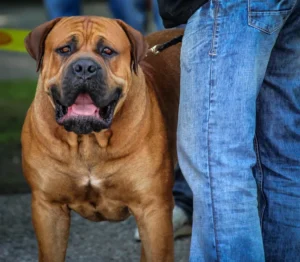
Proper nutrition is an integral component of caring for puppies and adult dogs alike. Most owners understand that puppies require food designed specifically to promote growth and development; however, many find it challenging to determine when is best to make the transition to adult dog food as different dogs may grow at different rates; you and your veterinarian can work out an estimate when would be the ideal time to switch.
Feeding Puppy Food
Puppies require more calories than adult dogs for proper growth and development, and to maintain high energy levels. Young puppies need roughly twice the number of calories as adult dogs of equal size. As your puppy nears adulthood, growth should slow and caloric needs decrease significantly – continued feedings of puppy food will lead to excess weight gain that could quickly turn into obesity and lead to health issues for your pup!
When Should Dogs Transition From Puppies to Adult Food Most breeds are considered puppies until around one year of age, though some large and giant breed dogs remain considered puppies for two or more years after one and may continue eating puppy food beyond this point. Conversely, some smaller dog breeds reach adult size before one – your veterinarian is your best source for advice when switching over.
When selecting the appropriate time and manner in which to transition a puppy onto adult food, your goal should be to do it before their growth slows but before excess weight gains start occurring. Keep an eye on their weight and height gain and look for gradual increases; typically this occurs around a year of age but could begin as early as eight or nine months old.
Assessing Your Dog’s Weight Be wary that weight gain does not always indicate physical growth; if your dog appears to be gaining weight without becoming taller or muscular, but is not growing, they could be overweight and need treatment at home. There are steps you can take at home to address their body condition effectively:
Run your hands along your dog’s ribcage. You should be able to feel their ribs covered by a thin layer of fat. If they cannot easily detect their ribs, your pup could be overweight.
Check your dog from the side and you should be able to spot an upward tuck in his belly; overweight dogs may only show some or no evidence of such an effect.
Once again, consider your dog from above; look for some narrowing at its waist just past its ribcage; a straight or bulging line from there to its hips indicates an overweight animal; prominent ribs with very small waist sizes could indicate underweightiness – get in touch with your veterinarian immediately for an evaluation!
If your pup is less than a year old and appears to be gaining weight, simply reduce portions or frequency of meals until switching over to adult food. Most vets suggest feeding young puppies three times per day but when approaching adulthood many puppies can transition down to just once daily meals.
Making Diet Changes Any diet change should be implemented gradually to avoid digestive distress, taking several days or weeks depending on how it is implemented.
As your adult dog continues to mature, finding appropriate food may take more time and research than before. While you may wish to stick with their favorite brand of food but switch over to an adult formula might help make things simpler; of course, your vet can assist in finding an appropriate diet plan.
Once you’ve chosen adult dog food, figure out the portion size that will eventually need to be fed based on your dog’s current weight and gradually add small percentages of adult food into each meal, gradually increasing it over time. To keep things easy for yourself and make switching diets simpler veterinary professionals often recommend adopting the “three by three” approach to switching diets: three meals in advance as opposed to multiple daily feedings of each.
Days 1-3: Feed one third of adult food and two-thirds of puppy food; days 4-6 and 7-9 feed one-half portion each of both adult food and puppy food
Day 10 and Beyond: Switch Your Dog Over To Adult Food
As part of this transition process, watch closely your dog’s appetite and bowel movements during transitioning. If diarrhea or vomiting arise, delay further transitioning. If this GI discomfort continues beyond 24 hours, choose another adult diet and restart transitioning process; contact your vet if symptoms continue for more than 48 hours.
Make sure to monitor your dog’s weight over the coming months in order to assess if any adjustments need to be made in terms of portion sizes or changes to meal times. Also ensure you follow up on annual or biannual veterinary wellness check-ups as recommended by your vet.





